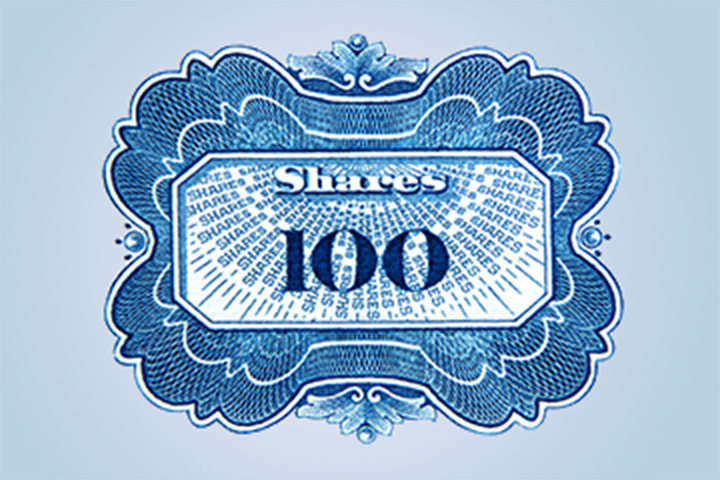The trend is your friend

Keytrade Bank
keytradebank.be
September 03, 2025
(updated October 17, 2025)
2 minutes to read
Some stock market wisdom sounds almost too simple. Yet this simplicity is often backed by years and years of stock exchange logic. "The trend is your friend" is a perfect example of this. At first, it may sound like well-meaning and fun rhyming advice from a manager or a coach. But as anyone who zooms in for a moment on how the stock market moves soon notices: this wisdom might actually be absolutely spot on.
In layman's terms:
“The trend is your friend” means this: follow the direction in which a stock is moving. Has the trend been going up for a while? If so, chances are it will continue in that direction for a while. Has it been on a downward trend for months? Then this might not be the right time to invest.
Who said it first?
This stock market wisdom gained considerable popularity among technical analysts in the United States in the 1970s and 80s. Their task was to analyse the numerous figures and graphs on the stock market in order to make the best possible investment decisions.
One of them was American trader Martin - Marty - Zweig. Above all, it is his name that will remain linked to this quote for a long time to come. In other words, the man who single-handedly predicted the global stock market crash of 1987 - the first since the WWII - just a few days before it actually happened. So when it comes to spotting trends, Zweig certainly has a thing or two to say.
Is that really how the stock markets operate?
There’s certainly something to be said for that view. The stock market is often more about expectations and emotions than pure figures. When a stock rises, other investors are naturally more inclined to buy in. And this, in turn, could lead to a sharper rise. This then creates a trend.
The same is also true in the other direction: when share prices fall, investors sell. They want to cut their losses, but doing so actually ensures an even further drop. So trends are in a sense self-reinforcing. And anyone who spots them can buy in right away.
Tesla's stock market fireworks in 2020
In 2020, Tesla’s share price rose by more than 700% in less than a year. Initially, many analysts thought the stock was overvalued. Nevertheless, the share price continued to rise for months. Investors who quickly recognised the upward trend saw their investment grow sharply.
Is it worth a try?
Do you have a potential trendwatcher hidden in you? What should you definitely take away if you are considering making “The trend is your friend" your personal investor motto?
| empty-header | empty-header |
|---|---|
Advantages | Points to consider |
You follow the direction of the market and thus increase your chances of a good return. | A trend is just a trend until it suddenly reverses. Choosing the right time to get out remains crucial. |
You develop financial self-discipline, because you follow movements and figures rather than emotions. | Not every rise or fall leads to a trend. Sometimes these are short upticks based on hot air. |
Control over impulsiveness: you are guided by price patterns rather than panic reactions to the stock market. | Not a fan of graphs and statistics? This may become a problem, because following trends requires a lot of reading and interpretation. |
Expert insight: “Let the 200-day average be your sat nav”
Geert Van Herck is a stock market expert and Chief Strategist at Keytrade Bank. He is known for his clear market analyses and accessible clarifications for private investors. Van Herck regularly shares his insights on investing, trends and strategies in blogs, webinars and the media.
"For me, ‘The trend is your friend’ is not an empty slogan, but a guiding principle. To better spot the trend, novice investors could look at the 200-day average on the daily charts. If the share, fund or tracker stays above this average, you are usually in a good position as an investor. If it falls below this, you need to take action and respond to this sign. For me, this average serves as a kind of sat nav, even in uncertain stock market times. Like rising or falling troughs in stock prices. It helps to keep a cool head and not panic, because studies have shown that the stock market generally rises more than it falls."
"Even those with a more passive investment approach can use this method: check whether the tracker is above or below the 10- or 12-month average every month, and then make a decision. This works surprisingly well, even with volatile shares such as bitcoin. Investors who live in constant fear of a correction – even when the stock markets are at record levels – often miss years of return. Confidence in the trend gives you peace of mind and direction."
GameStop and the “Reddit short squeeze”
Sometimes a trend hides in an unexpected corner. In January 2021, shares in the US game store chain GameStop (GME) became the talk of the stock market. For years, the stock was in decline; that is, until a large group of amateur investors on Reddit collectively decided to buy up shares en masse. Their aim: to push up the price as well as challenge big investors who speculated on a fall (so-called short sellers).
What followed was a classic short squeeze, a huge rise in the share price in a very short time:
- The short sellers were forced to buy back the stock to cut their losses;
- That additional buying pressure pushed the price even higher;
- In just two weeks, the share price went from around $20 to more than $80 per share.
Those who saw the upward trend in time, followed it and got out in time saw huge returns. Those who got in or out too late risked major losses once the hype died down. In that sense: “The trend is your friend – until it’s not.”
What should you bear in mind as an investor if you're just starting out?
You don't need to be a stock market pro to benefit from this knowledge of the stock markets. Practice makes perfect. Nevertheless, The following methods can assist you in this.
1. Recognise the trend
Look at a stock's price over weeks or months, not just day by day. Is the price clearly rising or falling?
2. Learn how to work with indicators
Certain technical indicators can help to better recognise trends. Get to know them better, little by little. Examples include:
- Moving average: This figure shows the average price over a period of, say, 50, 100 or 200 days, helping to smooth out trends;
- RSI ("Relative Strength Index"): A simple score from 0 to 100 that indicates whether a share is “overbought” or “oversold”.
- MACD ("Moving Average Convergence Divergence"): an indicator that shows when a trend reversal may be imminent.
These terms may sound very technical, but are often displayed and explained in a clear and understandable way in apps or on investment platforms. Having an above-average knack for maths is definitely not essential to make the difference with this stock market wisdom.
3. Set clear limits
Decide in advance when to get in and out. For example: You stay on board as long as the price remains above the moving average (see above) over a 100-day period. If not, get out.
4. Don't get carried away by FOMO
Not every price rise necessarily leads to a trend. Stay critical and don't just follow the crowd.
5. Watch the news
Trend spotting is a tool for achieving stock market success more quickly, but it is certainly not a glass ball. Equally important is keeping an eye on company results, economic news and sector developments.
Apple announces the first iPhone
Revolution in the smartphone world. When Steve Jobs presented the very first iPhone in January 2007, something remarkable happened. The huge shock effect among global consumers did not immediately translate to the same extent to the stock market. In fact, Apple's shares did not go through the roof, but rather set a steady upward trend in the coming months.
Investors who immediately saw the potential of the iPhone and remained patient, saw their investment grow solidly as a result. One year after the release of the iPhone, an Apple share was already worth almost twice as much. The true beginning of the upward journey.
From stock market wisdom to life wisdom
"The trend is your friend" is not a call to blindly follow possible trends, but to consider the rhythm of the stock market with an open mind. But trends can help you invest with more confidence and logic - even if you are just starting out.
In other words, by learning to spot and read trends, you’ll undoubtedly be taking important steps forward. Steps that will lead to new stock market insights, which will certainly be useful throughout your life as an investor. So awaken that amateur stock market analyst in yourself!


